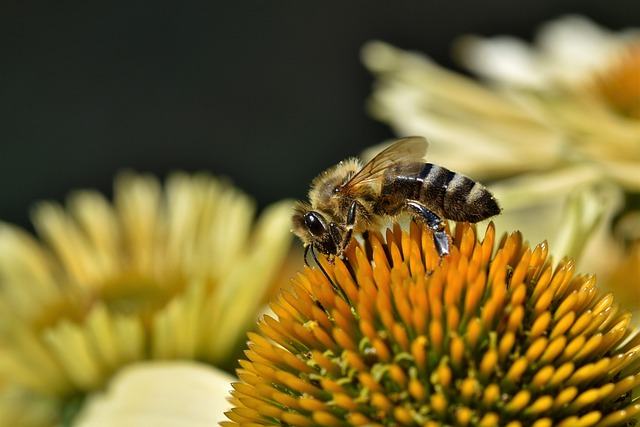Yellow jackets, social wasps with complex colonies, inhabit diverse environments from forests to urban areas. To humanely manage these pests (often searched for via "yellow jacket extermination near me"), understand their behavior: they're attracted to sweet substances and play ecological roles in pest control and pollination. Non-lethal options like trapping or natural repellents are effective alternatives to toxic methods, promoting coexistence with these beneficial creatures. Eco-friendly solutions, including IPM strategies, are widely available and prioritize the well-being of both humans and nature. Community engagement through prevention strategies and education reduces the demand for aggressive "yellow jacket extermination near me" methods, fostering a balanced ecosystem.
Yellow jackets, while essential for ecosystem balance, can pose a nuisance when they nest close to human habitats. This article explores humane and eco-conscious approaches to manage these insects, focusing on understanding their behavior and habitat. We compare traditional extermination methods with more sustainable alternatives, highlighting the importance of community engagement and prevention strategies. If you’re searching for yellow jacket extermination near me, discover natural solutions that keep both your home and the environment safe.
Understanding Yellow Jackets: Behavior and Habitat
Yellow jackets are a common pest, often sought after for yellow jacket extermination near me, but understanding their behavior and habitat is key to managing them humanely and eco-consciously. These insects are social wasps with a complex social structure, living in colonies that can range from a few hundred to thousands of individuals. They are highly adaptive and thrive in various habitats, from forests to urban areas, building nests in trees, attics, or even underground.
Understanding their behavior is crucial for effective management. Yellow jackets are primarily attracted to sweet substances, making them frequent visitors to gardens and outdoor events. While they can be aggressive if disturbed, they play a vital role in ecosystems by controlling pest populations and contributing to pollination. Thus, rather than resorting to toxic methods for yellow jacket extermination near me, consider non-lethal options like trapping or using natural repellents to coexist peacefully with these fascinating creatures.
Traditional vs. Humane Extermination Methods
Many people turn to yellow jacket extermination near me as a first response to infestations, but traditional methods can be brutal and inefficient. Common practices often involve toxic chemicals that not only kill the targeted pests but also pose risks to beneficial insects, pets, and local ecosystems. This approach can disrupt the delicate balance of nature, leading to further environmental concerns.
Humane extermination methods, on the other hand, prioritize safety and minimal impact. These strategies focus on non-lethal or low-toxicity solutions that effectively manage yellow jacket populations without causing harm. Traps and eco-friendly repellents are popular alternatives, allowing for the safe removal of stinging insects while preserving local biodiversity. By choosing humane methods, individuals contribute to a more sustainable and balanced environment, ensuring the well-being of both humans and nature in the long term.
Eco-Friendly Solutions for yellow Jacket Management
When considering yellow jacket management, there’s a growing demand for eco-friendly solutions beyond traditional extermination methods. Many pest control services now offer green alternatives that minimize environmental impact while effectively managing yellow jacket populations. These approaches leverage natural predators, habitat modifications, and targeted trapping to reduce yellow jacket nests and prevent future infestations.
If you’re looking for yellow jacket extermination near me that prioritizes sustainability, consider professionals who employ integrated pest management (IPM) strategies. IPM combines biological, cultural, and chemical methods to control pests in a way that protects non-target organisms and the environment. By embracing eco-friendly solutions, you contribute to a more balanced ecosystem while keeping your living spaces safe from these stinging insects.
Community Engagement and Prevention Strategies
Community engagement plays a pivotal role in adopting humane and eco-conscious approaches to yellow jacket management. Encouraging public participation in prevention strategies can significantly reduce the need for yellow jacket extermination near me. Educating residents about the ecological significance of yellow jackets, their role in pollination, and natural pest control methods fosters a sense of responsibility. This includes promoting the use of protective clothing when dealing with potential nests and encouraging proper waste management to minimize attractants like sweet foods and beverages.
Preventive measures such as sealing entry points into homes and buildings, using screens on windows and doors, and keeping outdoor areas clean and free of debris can deter yellow jackets from establishing nests nearby. By empowering communities with knowledge and tools for prevention, the demand for aggressive yellow jacket extermination methods decreases, leading to a more balanced and sustainable ecosystem.
In light of the above discussions, it’s clear that addressing yellow jacket management requires a balanced approach. While traditional methods exist for yellow jacket extermination near me, adopting humane and eco-conscious strategies offers safer alternatives for both people and the environment. By understanding their behavior and habitat, we can implement effective yet sustainable solutions, foster community engagement, and prevent future infestations. Embracing these practices not only minimizes harm but also contributes to a healthier ecosystem. When seeking yellow jacket extermination near me, consider professionals who prioritize these compassionate methods for long-term pest management.
